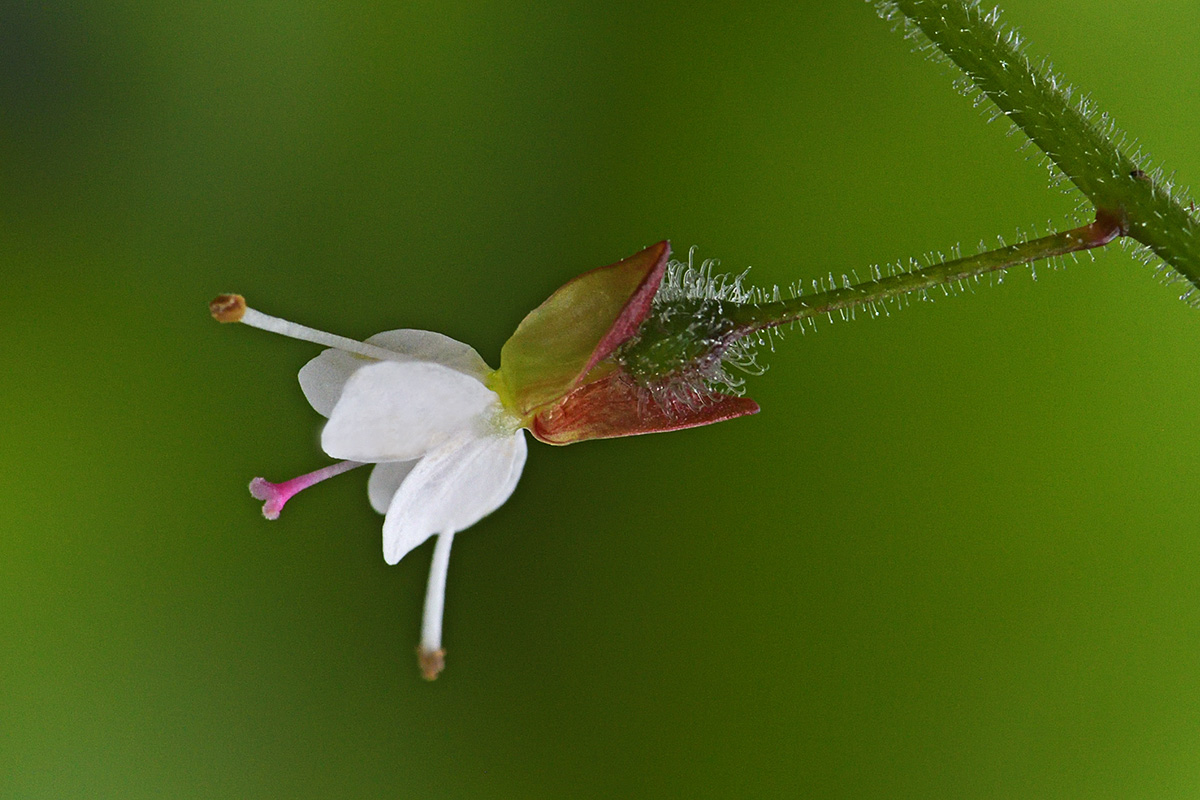The genus Circaea (in Circaea lutetiana) is named after the Greek goddess Circe who was known for her knowledge of potions and herbs. It was assumed that she used enchanter’s nightshade in the potion for transforming Odysseus crew into pigs. The art name lutetiana (in Circaea lutetiana) is Latin for the city of Paris which was once called ‘witch city’.
Enchanter’s nightshade belongs to the willowherb family Onagraceae. Relatives are the evening primroses and fuchsias.
Enchanter’s nightshade has oval-shaped leaves covered with hairs. The plant grows up to 50 cm tall and has clusters of tiny, white flowers at the head of long stems.
The flowers of enchanter’s nightshade are very small (around 4 mm) and have only two petals that are deeply cleft and look a little like mouse ears. The petals are backed by two green, wing-shaped sepals that protected the flowers before they open. Two stamens (the male reproductive organs) reach out like arms from each side at the flower center, the anthers at their tips resembling mittened hands. The long narrow structure projecting from the very center of the flower is the pistil, the female reproductive organ. The circular washer-shaped tissue at the base of the pistil is the source of the flower’s nectar, which is offered to entice pollinators to visit.
The flower’s ovary, covered in hooked hairs, is visible behind the sepals. After pollination, the flower’s petals, sepals, stamens and pistils wither and fall away, leaving the ovaries to ripen to the fruits.
The fruits of enchanter’s nightshade are 3 mm long and have two seeds each. The fruits have small hooks that get caught in the fur of passing animals and thus help to disperse them.
